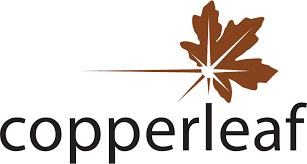This is the Sponsored paywall logged out
Utility Week reviews the combination of asset management strategy overhaul and decision analytics which put Northern Gas Networks' RIIO2 business plan into a class of one.
The advent of the RIIO-2 price control period has caused GB energy networks to question their readiness for the stretching expectations set out by Ofgem and reimagine legacy ways of working in order to deliver business plans which will satisfy the regulator and company stakeholders.
Draft determinations for the gas networks and power distribution companies, issued this summer, showed the regulator taking a fairly dim view on the success of companies in squaring up to the RIIO2 challenge. Just one company, Northern Gas Networks (NGN) received plaudits and the promise of a £1.6m reward from the regulator for the quality of its business plan.
With final determinations due out in December, Utility Week – in association with decision analytics specialist Copperleaf – hosted a timely webinar to examine the asset investment planning and management regime at NGN, which underpinned its business plan outperformance.
Since 2016, NGN has worked with Copperleaf to transform its approach to asset management, with a specific view to ramping up for RIIO2. Setting out the core challenge of the price control, Ian Coates, NGN’s asset strategy lead, explained how the business plan submitted to Ofgem had to demonstrate “a consistent application and implementation of cost benefit analyses”, and how those analyses had to be applied for each asset and across the business as a whole.
At the heart of the process, according to Coates, is the development of a sophisticated asset management system, and particularly one that takes into account the regulator’s new Network Asset Risk Metrics (NARMs) methodology.
Copperleaf’s decision analytics solution C55 has been key in allowing NGN to respond confidently to the introduction of NARMs said Coates: “We’ve developed our value framework, which underpins the C55 system [to give us] a consistent approach to value in projects and schemes, and even strategies across our asset base,” Coats elaborated. In practice, this means that every decision on investment is supported by a consistent analysis of data.
Of course NGN is not the only UK utility to a system like C55. Stefan Sadnicki, managing director for EMEA at Copperleaf, told the webinar audience:“Each of the gas distribution networks is following a similar asset risk modelling methodology,” he said. “Each of the sectors regulated by Ofgem in the UK have developed these methodologies across their groups. What’s interesting is how each company takes this common methodology and applies it in a way that’s right for their business.”
So what sets’ NGN’s application approach apart?
While the first phase of the implementation of the NARMs methodology was the development of a value-based business plan, the aim of the next phase is both to show that the network is delivering against that plan and to “develop the visibility” of that improved performance. This is where the importance of data becomes paramount.
Coats explained how NGN is looking to automate the deployment of asset data from its asset repository into the C55 system – something that is currently a manual process that he described as “time consuming”.
Once that data is in the system, Coats said the next step involves “extending the planning horizon to build a longer-term view”. He added that this will allow NGN to move beyond thinking only in terms of regulatory periods and towards what he called “a living investment plan”.
Coats said that using Copperleaf’s predictive analytics tools has allowed it to plan how to use its assets in a more intelligent way: “We can start to take in some of the broader research around energy futures and see if we can implement that into our business plan and into our investment plan, and see what the impact is.”
On the same theme, Sadnicki described how the Copperleaf programmes help clients – including NGN – take a holistic view of assets and projects: “When projects are carried out in the field, you’re not intervening asset by asset, so we’ve enhanced some of our tools to support a ‘bundling’ approach. So you can evaluate the value of project bundles and not simply look at everything at an asset level.”
However efficient an organisation’s asset and investment strategy becomes, of equal importance is explaining to staff, shareholders, customers and other stakeholders.
“Bringing the business along the journey with you is incredibly important,” said Coats in response to a question about implementing cultural change. “Part of asset management in general is about breaking own silos between traditional departments and saying [this is] part of a longer process of thinking about what we do with assets.”
As part of the first phase of its asset management transformation, NGN took around 40 staff through an Institute of Asset Management certification course. In addition, the company developed its own training programme, which 150 staff have now been through.
Sadnicki praised NGN’s approach, and concluded by explaining how cultural transformation is a key part of any business transformation process.
“I think it’s important that people consider the business change impacts,” he said. “Whether that’s supported by Copperleaf or whether they do that themselves or with other providers, it’s important to remember a technology solution is only as good as the use of that system and the processes that you have around it.”
To listen to the webinar on demand and in full, click here

Please login or Register to leave a comment.